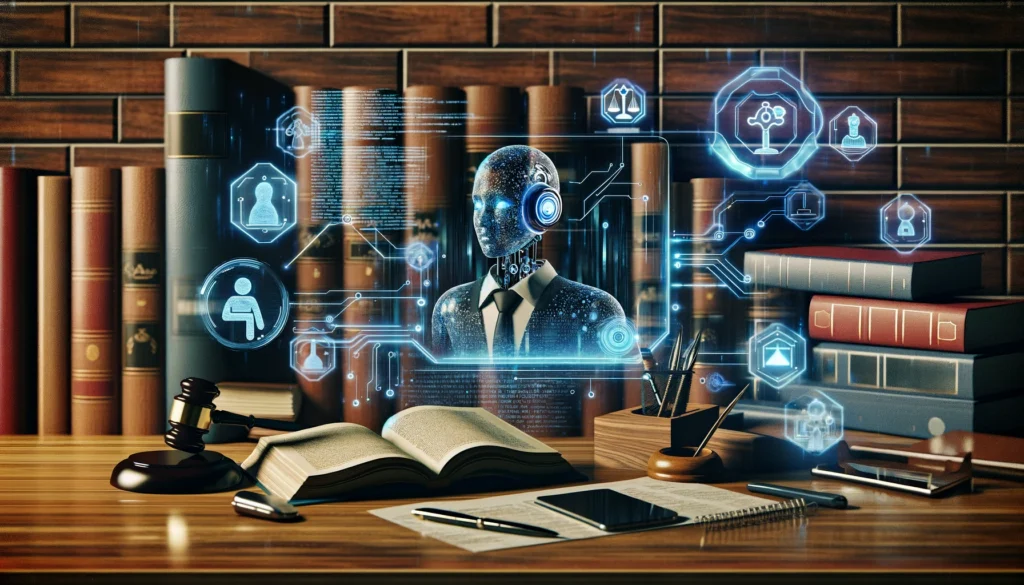
Unlocking Efficiency: A New Era for Paralegals
The evolving role of technology in legal work is revolutionizing the field, particularly for paralegals. As artificial intelligence tools become increasingly sophisticated, paralegals now have the opportunity to streamline their tasks, making the legal process more efficient. Among the most promising of these AI tools is ChatGPT, which has shown tremendous potential in helping legal professionals draft documents and manage workloads effectively.
ChatGPT offers the ability to handle repetitive tasks, reduce human error, and produce high quality drafts, marking a significant advancement in the realm of legal tech.
The Foundation of Health Care Directives: An Overview
Health care directives, also known as advance directives, are legal documents that outline a patient’s preferences for medical care if they become unable to communicate. These directives ensure that an individual’s health care wishes are respected and can provide guidance to healthcare providers and family members during critical times.
Key components of a health care directive include:
- Living Will: Specifies types of medical treatments preferred.
- Medical Power of Attorney: Designates a person to make decisions on the patient’s behalf.
- Organ Donation Preferences: Indicates willingness to donate organs.
- Do Not Resuscitate (DNR) Orders: Requests not to perform CPR if the heart stops.
Understanding the intricate details and necessary components ensures that these documents are both legally sound and reflective of the client’s wishes.
Harnessing the Power of ChatGPT: Getting Started
As you delve into using ChatGPT for creating health care directives, it’s important to understand its capabilities and setup procedures. ChatGPT, developed by OpenAI, is a versatile AI tool capable of generating coherent and contextually relevant text based on user prompts.
To get started, follow these steps:
- Account Setup: Visit OpenAI’s website and create an account.
- Initial Configuration: Optimize settings specifically for legal work by selecting relevant options that tailor the AI’s responses to suit legal tone and accuracy.
- Integrations: Explore integrations with existing legal software to streamline the workflow.
By configuring ChatGPT for legal tasks, paralegals can maximize its potential in drafting detailed and precise health care directives seamlessly.
Also read:
Crafting Precision: Nuanced Prompts for Drafting Directives
To fully harness ChatGPT’s capabilities, paralegals must craft prompts with clarity and specificity. The way you phrase your prompt can significantly influence the quality of the AI-generated content.
Here are some effective strategies:
- Clarity: Be precise about what you need. Instead of a vague prompt like “Draft a health care directive,” specify “Draft a health care directive that includes a living will, medical power of attorney, and organ donation preferences.”
- Specificity: Include pertinent details that should be addressed. “Include a segment that specifies life-sustaining treatments such as mechanical ventilation, and designate Jane Doe as the medical power of attorney.”
- Mapping Complex Terms: Use ChatGPT to translate legal jargon into accessible language for clients. For example, “Explain the implications of a DNR order in simple terms.”
Examples of nuanced prompts:
- “Draft a living will clause specifying that the patient declines life-sustaining treatments such as mechanical ventilation unless there is a reasonable possibility of recovery.”
- “Create a section for a health care directive appointing John Doe as the medical power of attorney with full authority to make decisions on the patient’s behalf.”
- “Describe the role and responsibilities of a medical power of attorney in layman’s terms.”
This strategic approach ensures the content is not only accurate but also easily comprehensible for clients, bridging the gap between complex legal language and client understanding.
Also read:
Enhancing Accuracy: Verification and Refinement Techniques
While ChatGPT is adept at generating initial drafts, human oversight remains crucial for ensuring accuracy and legal fidelity.
Here are some best practices:
- Cross-check: Always review AI-generated content for factual correctness. Verify medical terminologies, legal language, and specific client details.
- Refine: Edit the text to align with jurisdiction-specific laws and client-specific instructions, ensuring that every aspect of the directive is comprehensive and tailored.
- External Tools: Utilize external resources like legal databases and medical dictionaries for cross-referencing and validating information.
Implementing these techniques systematically will help paralegals maintain a high standard of legal documentation, combining AI efficiency with human expertise.
Also read:
Streamlining Workflows: Integrating ChatGPT into Daily Tasks
Effective integration of ChatGPT into daily workflows can vastly improve productivity and compliance in drafting health care directives.
Adopt these strategies:
- Task Embedding: Use ChatGPT at different stages of document preparation. For instance, initial drafting, refining complex sections, and generating client-friendly summaries.
- Automation: Automate repetitive tasks like updating template fields or generating similar sections for different clients while ensuring each document meets regulatory compliance.
- Balance: Maintain human oversight to verify and personalize AI-generated content, ensuring it meets individualized client needs and legal standards.
Through these methods, paralegals can enhance their workflow efficiency and accuracy, making the most of both AI capabilities and human judgment.
Also read:
Ethical Considerations and Client Confidentiality
As the use of AI in legal work expands, ethical considerations and client confidentiality must remain paramount.
Follow these guidelines:
- Data Privacy: Ensure that all client data input into ChatGPT is adequately protected. Use encrypted channels and anonymize sensitive information where possible.
- Regulatory Compliance: Adhere to prevailing ethical frameworks and guidelines set out by legal associations regarding the use of AI.
- Transparency: Inform clients about the use of AI in drafting their documents, maintaining transparency and trust.
Observing these practices will help maintain the integrity and trustworthiness of the legal profession while leveraging AI technologies.
Also read:
The Road Ahead: Continuous Improvement and Learning
To stay competitive and effective, ongoing training and familiarization with AI tools like ChatGPT is crucial for paralegals.
Consider these steps:
- Training Programs: Engage in continuous learning through courses and training programs focusing on AI in legal work.
- Updates: Stay abreast of the latest advancements and features of ChatGPT to fully exploit new functionalities and improvements.
- Networking: Join professional forums and communities discussing AI applications in legal contexts, sharing knowledge, and best practices.
Embracing these avenues for growth ensures that paralegals not only keep up with technological advancements but also lead the way in modernizing legal workflows.


